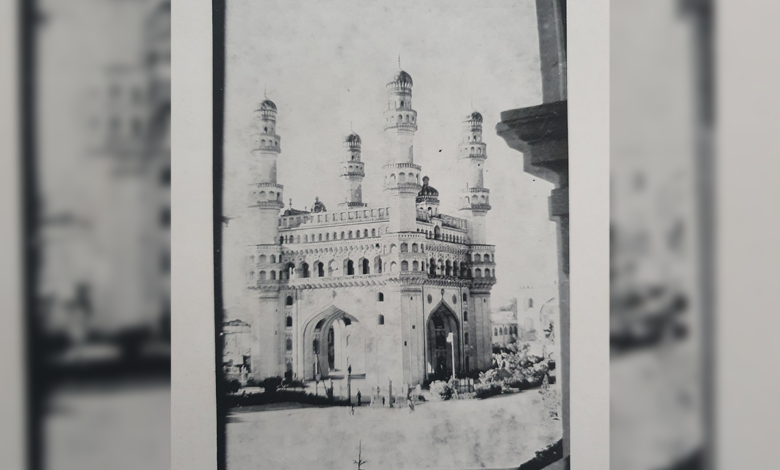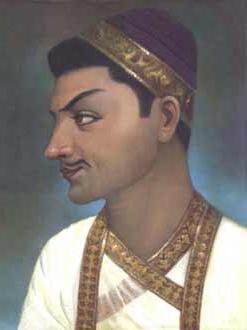No such details available: ASI on Hyderabad – Bhagyanagar name

- Earlier in June, the ASI also said there is no evidence of ancient mosques under its jurisdiction in Telangana having been built on Hindu religious sites.
Hyderabad: The Archaeological Survey of India (ASI) here said it has no information on Hyderabad being named Bhagyanagar. It also said that it has no details of historical records of the Bhagyalaxmi temple at the Charminar too.
The ASI’s response on the Bhagyanagar name for Hyderabad and the Bhagyalaxmi temple was given to activist Robin Zacheus. The activist posed a bunch of questions to the ASI’s Hyderabad circle, under which the Charminar and Golconda fort come. Robin asked for records or historical evidence on these matters through a Right to Information (RTI) query.
What he asked
The ASI, in its response dated August 4, said “No such details are available with this office”. Here is what Robin sought from the ASI:
- If Hyderabad was ever named Bhagnagar, Bhagyanagar, and later rechristened.
- If as per ASI records, which year (if it happened) was Hyderabad named Bhagyanagar or Bhagnagar.
- Asked to share historic evidence such as an inscription, coin or miniature of the period mentioning the name of Bhagmati or Bhagyanagar.
- Whether the ASI has any records of former Deputy Prime Minister Sardar Vallabhai Patel proposing for changing Hyderabad’s name.
- Asked to furnish the year in which the Bhagyalaxmi temple at Charminar was constructed.
- Whether ASI Hyderabad has any records or evidence that Bhagyalaxmi temple (or any) temple existed where the Charminar stands.
- If ASI has any evidence like a coin or miniature coin from the period mentioning the name of Bhagmati or Bhagyanagar.
The ASI’s response to Robin on Hyderabad comes at a time when the right-wing chorus is growing to change the city’s name. The Bharatiya Janata Party (BJP) has time and again called for renaming the city to Bhagyanagar. BJP chief Bandi Sanjay recently also exhorted his followers to ”dig up mosques” and search for Shiva Lingas earlier.
‘No ancient mosques built on Hindu sites in Telangana’
Earlier in June, the ASI also said there is no evidence of ancient mosques under its jurisdiction in Telangana having been built on Hindu religious sites. The response then too was to an RTI query by Robin, who is based in Hyderabad. He asked for evidence ”pertaining to the Ancient\ Mosques” that were supposedly built on Hindu religious sites, or temples.
The response came from the ASI’s Hyderabad circle, under which Telangana falls.
The ASI Hyderabad circle has about eight monuments under it. It includes the Charminar and the Golconda fort in Hyderabad. In its reply, the ASI stated, ”None of the monuments/sites under the jurisdiction of Archaeological Survey of India, Hyderabad circle in the Telangana state has any evidence of ancient mosques been built on Hindu religious sites.”
Charminar History – Bhagmati’s existence in question
The Charminar is Hyderabad’s foundational monument. Built in 1591, it was constructed to mark the city’s establishment by Mohammed Quli Qutb Shah, the fourth ruler of the Qutb Shahi (or Golconda) dynasty. Prior to the Charminar being built, the Golconda fort (in Telangana) was a walled city, from where the first three kings Qutb Shahi kings had ruled.

The Golconda or Qutb Shahi dynasty existed from 1518 to 1687, until Hyderabad was conquered by the Mughals. It is often debated among experts whether Hyderabad was ever called Bhagnagar or even Bhagyanagar. Many historians have raised questions about whether Mohd Quli’s lover Bhagmati even existed.
Though there are historical references to her, no concrete evidence is available to date if she lived.
ASI itself has said Bhagya Laxmi temple at Charminar is unauthorised
The irony of all of this is that the Bhagyalaxmi temple that is attached to the Charminar is in fact an illegal structure. It is believed to have come up in the late 1960s. Even the Archaeological Survey of India (ASI) has acknowledged it. At a presentation at Lamakaan in Hyderabad in 2019, former superintending archaeologist of ASI, Milan Kumar Chauley, reiterated the same.
Who was Bhagmati – what the legend says?
According to legend, Mohd Quli Qutb Shah was in love with a Hindu woman named Bhagmati even before Hyderabad was founded. His father was the previous king Ibrahim Qutb Shah who constructed the Puranapul bridge. The bridge connects the Golconda fort and Old City, and the story is that it was built for his son so he could meet Bhagmati.
(However, logically, Ibrahim would have built the bridge keeping in mind water requirements. Hyderabad was founded on the southern banks of the Musi river.)
After he becomes the king in 1580, Mohd Quli Qutb Shah, it is said, married Bhagmati. He later named the new city he founded (after leaving the walled city of Golconda fort) after her: Bhagnagar. The name Hyderabad comes later after Bhagmati converted to Islam and took on the name of Hyder Mahal, the legend says.
Historians have often refuted this story. In the book History of the Medieval Deccan, edited by HK Sherwani and P. M. Joshi, it is pointed out on page 459 that “numismatic evidence also points to the same direction (non-existence)…we have coins struck in 1012/1603 at Daru’s-Saltanat Haidarabad, but we have no coin which was minted at ‘Bhagnagar’”.
Another thing many point out is that other courtesans like Taramati have their graves and other evidence of their existence. So if Bhagmati was in fact real and important for Hyderabad, ideally some marker of her life should have been found. A few claims of her grave were made in the past, but nothing substantial.
Does it matter?
However, many others believe that Mohd Quli Qutb Shah had a lover, as there is some circumstantial evidence. Bhagmati is referred to, albeit in a derogatory manner, in some Mughal sources from the 16th century about Hyderabad.
Hyderabad was destroyed by the Mughals under Aurangzeb, who conquered the Golconda kingdom after an eight-month long batter in 1687.
Regardless, it may however be noted that Bhagmati being real or not in any way makes no difference to Hyderabad. Her legend is not associated with the city as an important point in history. With or without her, Hyderabad would have been built, and the Golconda kingdom would have gone on to meet the same fate as well.







